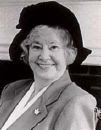Little Miracles
I’m the person whose fast food order is never right. I used to love McDonalds’ coffee – the kind they served after the lady burnt her thighs and before the Starbuck’s wanta-be varieties appeared at the Golden Arches. I especially liked their coffee after they began putting the cream and sugar (i.e. Equal) in the cup for you. And surprisingly, they usually got the number of creams and sugars right – for a large coffee, I preferred 3 creams and 3 Equals. Most of the time I got 3 of each. Then as seems to be normal, all good things come to an end. McDonalds added café lattes and cappuccinos’ to their menu and the staff could no longer count. I never know from one day to the next how much, if any, cream and Equal will end up in my coffee.
Life is full of disappointments. I can’t abide Thousand Island dressing on anything, much less my Reuben sandwich. By the way, who thought of doing that? Did someone just wake up one day, find their mustard jar empty, and improvise? I ate Reubens for years without a hint of salad dressing. Then seemingly all at once, restaurants started dumping copious amounts of the pink stuff on my corned beef and sauerkraut. Every once in awhile when I’m feeling lucky, I take a chance and order a Reuben asking for no – absolutely no – Thousand Island dressing. My success rating at getting it the way I want it is about 30%.
Little miracles happen every day… I guess. They just usually don’t happen to me. Or maybe they do and I don’t know it. Is it a miracle if you don’t know it? Kind of like if a tree falls in the forest and no one… Well, you get my meaning.
Last night I spent about 3 hours on the floor running my fingers through the carpet in my living room. I’d lost a contact lens. I wear rigid gas permeable lens and no, they are not the disposable kind – they are the “$190 a pair” kind. I looked until I couldn’t look any more without giving into the urge to vacuum. Nothing like staring at dust bunnies at eye level to get you in the mood to clean! But I didn’t. Pulling out the vacuum would have been abandoning all hope. Instead I did the CSI thing – using my one good eye, found a flashlight, turned out all the lights and searched for a glint – a reflection – something that didn’t’ belong on the dark carpet. Nothing. Well, at least no contact lenses. I did find a missing sock under my computer desk and several ink pen caps.
At 11:00 pm I gave up my quest for the missing lens, left a message on my optometrist’s voice mail, and began going through my old lenses hoping for one I could still see something through. Reading … Distance… something. Found one that had me able to see general shapes if not faces. It would have to do.
The next morning I went to work and managed to squint my way through eight hours of mining business.
When I came home I took another quick look on the patch of carpet in the target range.
Nothing.
I ate dinner then settled in front of my computer. I need to write a blog for Thursday. It was gong to be on the topic of lousy customer service – see my first two paragraphs above. Then it happened.
I looked down at my feet, pondering the spelling of sauerkraut (just ask my co-author, spelling is not my strong suit.) And there it was.
Right where I’d looked a hundred times.
A little miracle.
I can see again.
Life is good. Tomorrow I might even get a cup of coffee the way I want it.
Or not.
Evelyn David




